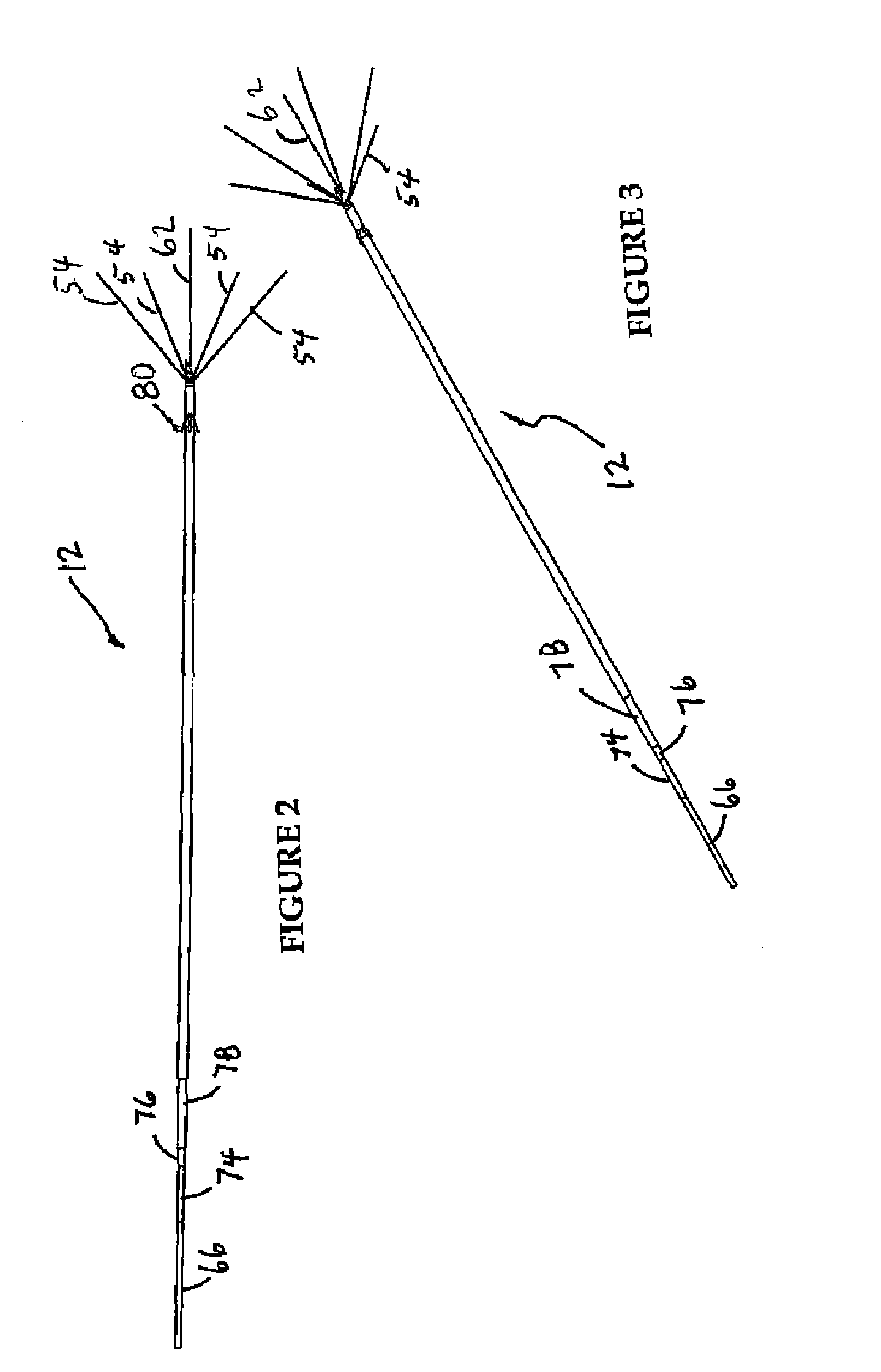RF ablation device with jam-preventing electrical coupling member
a technology of electrical coupling and ablation device, which is applied in the field of rf ablation device with jam-preventing electrical coupling member, can solve the problems of loose bundles of thermocouple wires and inability to move freely, and achieve the effects of reducing the likelihood of unintentional actuation, removing potential loss of information, and facilitating information provision
- Summary
- Abstract
- Description
- Claims
- Application Information
AI Technical Summary
Benefits of technology
Problems solved by technology
Method used
Image
Examples
Embodiment Construction
[0061]Referring to FIG. 1, an ablation instrument 10 constructed in accordance with the present invention is illustrated. Instrument 10 comprises a catheter portion 12 and a handle portion 14. Ablation instrument 10 is illustrated with one of the two mating handle halves 28 removed, in order to reveal its internal parts and workings in connection with the following description.
[0062]Referring to FIGS. 1, 2 and 3, the inventive ablation instrument 10 is illustrated in the fully forward ablation position, which the instrument takes after full advancement of stylets 54 into tissue, for example, tissue to be subjected to ablation by being treated with radiofrequency energy. In this position, the trocar 32 with its point 34 provide catheter 12 with a simple thin smooth pointed surface well-suited to penetrate healthy tissue while doing minimal damage. At the same time, the sharpness of the point and the relatively stiff, though somewhat flexible, nature of catheter 12 enables accurate st...
PUM
 Login to View More
Login to View More Abstract
Description
Claims
Application Information
 Login to View More
Login to View More - R&D
- Intellectual Property
- Life Sciences
- Materials
- Tech Scout
- Unparalleled Data Quality
- Higher Quality Content
- 60% Fewer Hallucinations
Browse by: Latest US Patents, China's latest patents, Technical Efficacy Thesaurus, Application Domain, Technology Topic, Popular Technical Reports.
© 2025 PatSnap. All rights reserved.Legal|Privacy policy|Modern Slavery Act Transparency Statement|Sitemap|About US| Contact US: help@patsnap.com



